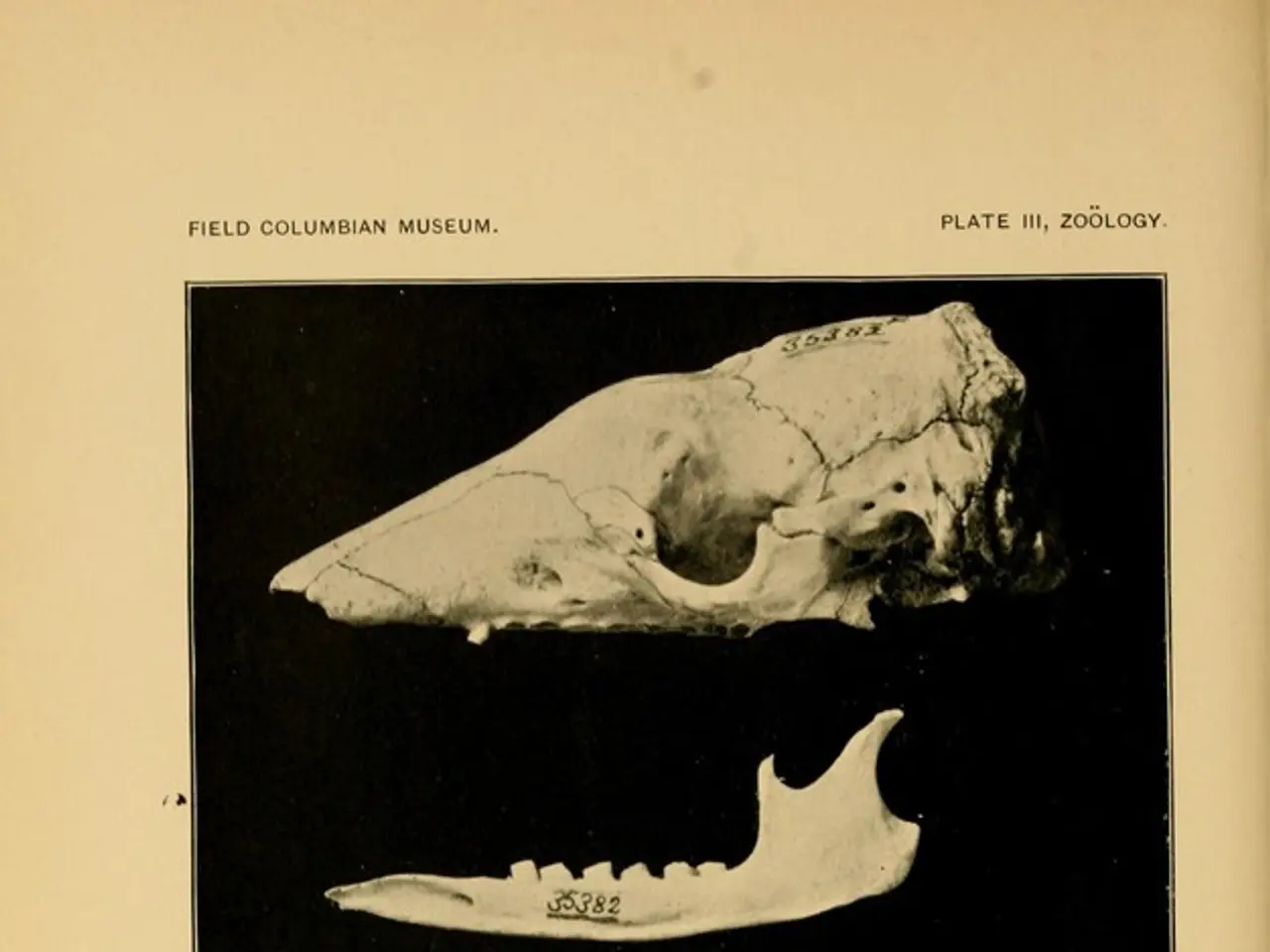Can osteoporosis be reversed? Exploring treatment options, prevention strategies, and additional insights
Osteoporosis, a condition that weakens bones and increases the risk of fractures, can be managed and in some cases, even reversed. A combination of lifestyle changes, medications, and complementary strategies can help strengthen bones and reduce the risk of fractures.
A balanced diet that includes fruits, vegetables, minerals, and protein, along with a diet rich in calcium and vitamin D, may help prevent osteoporosis. Engaging in weight-bearing and resistance exercises, such as walking, jogging, or tai chi, can stimulate bone growth and improve bone mineral density while lowering fracture risk. Balance training is also crucial to reduce the risk of falls, a common cause of fractures in older adults.
Quitting smoking and limiting alcohol intake are essential as both interfere with bone metabolism. At home, practical safety measures like installing handrails and reducing fall hazards can help prevent fractures.
Medications approved for osteoporosis include bisphosphonates, which slow bone loss, and anabolic agents like teriparatide that stimulate new bone formation. Selective estrogen receptor modulators (SERMs) can help prevent bone loss and fractures, but they have limitations and can cause side effects. Raloxifene is the only SERM available to treat osteoporosis.
In severe cases or when other treatments are ineffective, biologic drugs like denosumab (Prolia) and romosozumab (Evenity) may be recommended. Hormone replacement therapy (HRT) is not typically used alone to treat osteoporosis due to potential risks.
Lifestyle strategies can prevent future bone loss and reduce the risk of fractures. Eating a nutrient-dense diet, especially foods rich in vitamin D and calcium, is important for bone health. Vitamin D supplements can help treat vitamin D deficiency.
Osteoporosis is a condition where bones become weaker and more likely to break. Bones consist of living tissue that breaks down and is replaced. Bisphosphonates, a common medication, help bones maintain their density and lower a person's risk of breaks. They can be taken in the form of tablets or an injection.
It's important to note that osteoporosis can affect anyone, and certain risk factors increase the likelihood of developing the condition. These include going through or having been through menopause, having pain in the back from a possible vertebrae fracture, experiencing a fracture over the age of 50, being a female over the age of 65 or a male over the age of 70, having an inflammatory or autoimmune condition, taking medications associated with bone loss, or having any other risk factors for osteoporosis.
In some cases, a person may be able to reverse osteoporosis. If you fall into any of the at-risk categories, it's crucial to consult a doctor and receive a bone density test. Early detection and intervention can lead to effective management and even reversal of osteoporosis.
[1] National Osteoporosis Foundation. (2021). Foundation's recommendations for diagnosis and treatment of osteoporosis in postmenopausal women. National Osteoporosis Foundation.
[2] National Institute on Aging. (2020). Osteoporosis: Preventing fractures in older adults. National Institute on Aging.
[3] Buxton, J. (2019). The Bone Density Solution: A 3-Step Program to Naturally Build Stronger Bones and Prevent Osteoporosis. Rodale Books.
[4] National Osteoporosis Society. (2020). Exercise and osteoporosis. National Osteoporosis Society.
- A diet rich in calcium and vitamin D, complemented by exercises like walking and tai chi, can help prevent osteoporosis and reduce the risk of fractures.
- Quitting smoking, limiting alcohol intake, and installing safety measures at home can help prevent fractures associated with osteoporosis.
- Bisphosphonates, a common medication for osteoporosis, help bones maintain density and lower the risk of breaks.
- Hormone replacement therapy (HRT) is not typically used alone to treat osteoporosis due to potential risks.
- A balanced diet that includes minerals, protein, and foods rich in vitamin D and calcium is important for bone health.
- Takings vitamin D supplements can help treat vitamin D deficiency.
- Bisphosphonates can be administered as tablets or injections.
- Certain risk factors that increase the likelihood of developing osteoporosis include menopause, aging, inflammatory or autoimmune conditions, and medications associated with bone loss.
- Early detection and intervention, such as a bone density test, can lead to effective management and even reversal of osteoporosis.
- The National Osteoporosis Foundation and National Institute on Aging provide recommendations for diagnosing and treating osteoporosis, as well as ways to prevent fractures in older adults.




